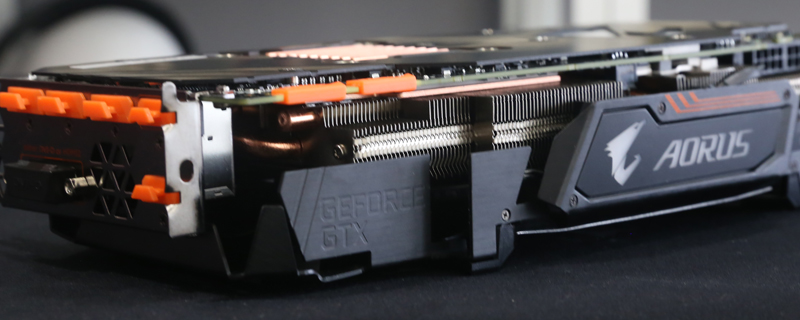Gigabyte GTX 1080 Ti Aorus Extreme Review
Conclusion
The Aorus Extreme would, from the name at least, suggest a big old factory overclock on the GPU. One of those cards that you can ignore if you want to manually overclock. However, that actually isn’t the case.
Firstly, yes there is a little bit of tweaking of the Pascal GPU to gain an extra 38 MHz over the regular Gigabyte GTX 1080 Ti Aorus, and over 150 MHz higher than a stock GTX 1080 Ti. Now any additional performance is lovely to have but we don’t think that the GPU clock speeds are when the Aorus Extreme earns its stripes. The real big increase comes from the speed of the GDDR5X, and at the resolutions we’re testing at it is almost more important to have fast memory than it is to have a fast GPU. The results we saw throughout our benchmarks indicated how beneficial this is, with the Aorus Extreme regularly ahead of its standard counterpart.
It isn’t only in the cold hard clock speeds that the Extreme benefits though. The increased size of the copper portion of the backplate means a much more efficient cooling solution than the regular Aorus, which was already a fair way ahead of its air-cooled competition. Despite these faster clocks the Extreme was a degree cooler, and that extra thermal headroom allowed the nVidia GPU Boost 3.0 technology to maintain a higher average frame rate too, which in turn gives better performance. Higher frame rates at lower temperatures is pretty much the holy grail for a graphics card, particularly when we’re used to the heavily overclocked versions of cards sacrificing everything on the altar of performance and attention grabbing numbers. Instead, Gigabyte have just made minor improvements to every element of an already excellent card.
So it is cooler than the normal GTX 1080 Ti Aorus, and it is faster too. That covers whether you should get a standard Aorus or the Extreme model we’re reviewing today. For those of you who haven’t read our review of the original Aorus there are a lot of ways in which the Gigabyte raises itself above the multitude of GTX 1080 Ti’s too.
The cooler works well, obviously, but it is also pretty quiet considering how much air it can shift. For those of you with VR headsets the extra HDMI ports – one on the rear of the Aorus and one at the front-of-the-case side – will be a boon. We all love having options and the Gigabyte GTX 1080 Ti Aorus Extreme presents us with many. The RGB lighting is another highlight being able to produce all the colours you’re likely to desire in rich hues or subtle ones, without it ever clashing with the very subtle orange highlights on the shroud.
About the only teensy negative we can find is that the Gigabyte GTX 1080 Ti Aorus Extreme doesn’t quite hit the insane heights we’ve seen from the very best Pascal cards, but we’re talking tenths of a frame per second and nothing you’re likely to notice in actual use. Otherwise it has enough extra VR headers, bags of performance at very cool temperatures, and a very attractive design, making it a worthy winner of our OC3D Performance Award.
Discuss your thoughts about the Gigabyte GTX 1080 Ti Aorus Extreme Review on the OC3D Forums.




